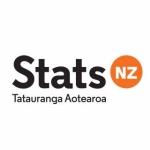Dairy industry dominance in agriculture sector grows
The country now has more than six million dairy cattle, an increase partly driven by higher milk solid payouts, Statistics New Zealand said today. The number of sheep continues to fall.
The number of dairy cattle increased by 259,000 in the year ended 30 June 2011, according to the annual Agriculture Production Survey, with most of the increase in the South Island.
"The North Island regions tend to be mature dairy farming areas and so have small annual increases. It is in the South Island regions that we are seeing the big increases, particularly in Canterbury," agricultural statistics manager Hamish Hill said.
Mr Hill said sheep numbers declined from 32.6 million in 2010 to 31.1 million in 2011. "Part of the decrease can be put down to bad weather, which affected the number of lambs born."
Continued high primary produce prices influenced how farmers managed their stock. Higher payouts for milk solids were behind the continuing increase in dairy cattle numbers. Higher beef and venison prices meant farmers sent more stock for slaughter – this can be seen in the lower numbers for beef cattle and deer in the year to 30 June 2011.
Despite the presence of Psa disease, there was just a 2 percent fall in the area planted in kiwifruit between the two survey years (ending 30 June 2009 and 2011).
"During this period, the biggest kiwifruit region of Bay of Plenty had little change in the area grown, even though the region was affected by Psa and conversions to other farming activities such as grazing," Mr Hill said.
The 2011 Agricultural Production Survey is a sample survey of information from farmers and foresters.
The 2011 survey covers land use, animal farming (livestock), horticultural and arable crop growing, forestry, and farming practices in New Zealand (including fertiliser and cultivation). The survey was conducted in partnership with the Ministry for Primary Industries.
See also:
Agricultural Production Statistics: June 2011 (final) – Information release
